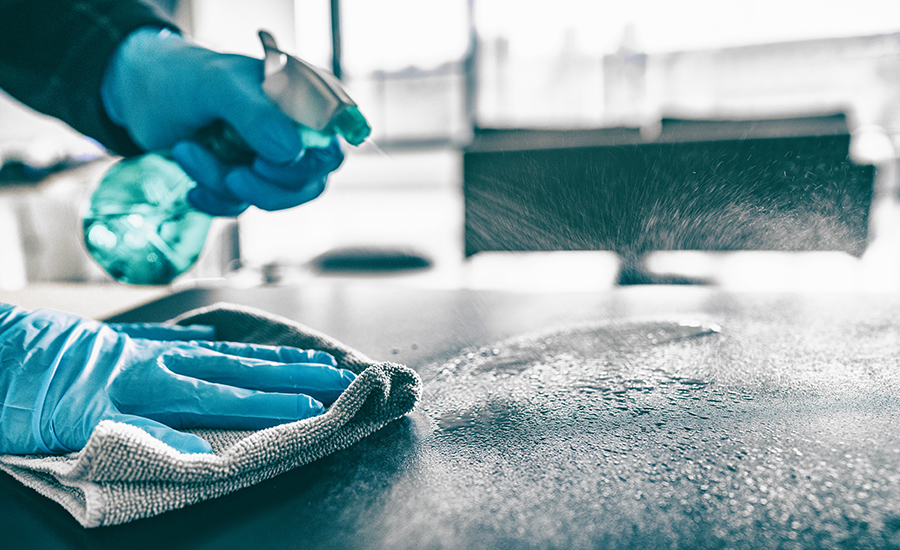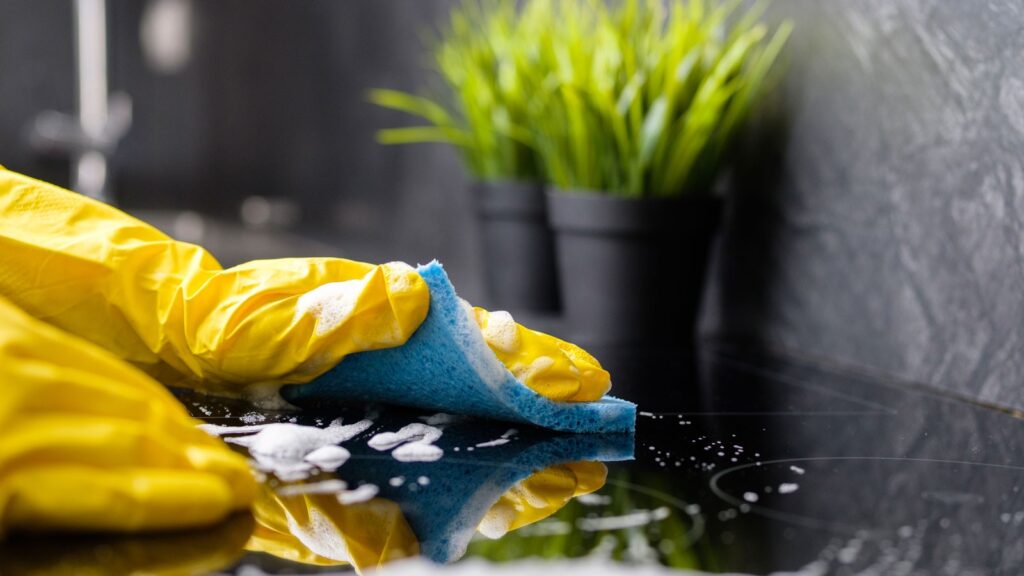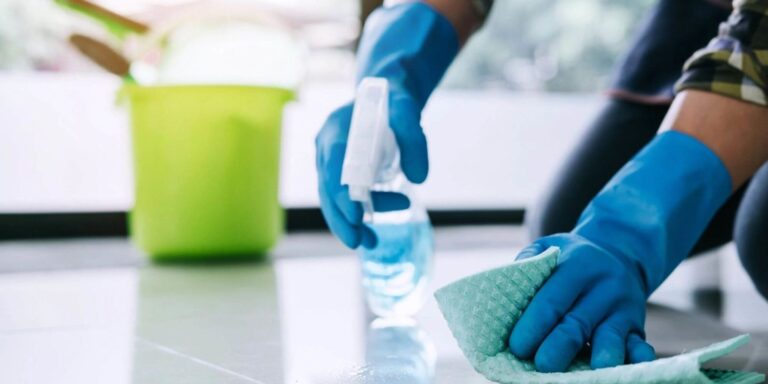The recommended water temperature for effective disinfection of surfaces and equipment is between 80 and 90 degrees Celsius. This temperature range is known to be highly effective in destroying harmful pathogens. Household tools like steam cleaners and washing machines are capable of reaching and maintaining this temperature, ensuring thorough disinfection.
Let’s embark on this journey together, discovering the perfect balance between hygiene, safety, and practicality in the quest for a thoroughly disinfected environment.
What is disinfection?
Disinfection is a way of cleaning that focuses on getting rid of tiny living things like bacteria and viruses. Unlike regular cleaning, which just makes things look neat, disinfection uses special chemicals to make the surface temporarily free from harmful germs.
Moreover, it’s important to know that disinfection doesn’t remove every single germ on a surface. If you want to completely get rid of all the germs, that’s called sterilization. However, sterilization is usually something experts do, and it’s not something you’d typically do at home. For most of us, just doing a good disinfection is enough to keep our homes healthy.
Types of disinfection

- Hot Water:
- Hot water is easy to use and can kill many harmful germs. If you have a steam cleaner, you can use it not just on tools but also on big surfaces.
- Chemicals:
- There are different chemicals that can disinfect surfaces. Two common ones are hydrogen peroxide and chlorine.
- Alcohol:
- Alcohol, like ethyl and isopropyl alcohol, can kill lots of harmful bacteria. The best disinfectants have more than 70% alcohol. The more alcohol, the better it works.
Factors Influencing Water Temperature
Choosing the right water temperature for disinfecting equipment is like finding the perfect balance. First, we need to consider the germs we’re dealing with some don’t like high temperatures, and some do. Then, the kind of cleaning solution we use matters; some work best when it’s hotter, while others do well at cooler temperatures.
Moreover, we also have to think about the equipment itself. If it can’t handle high temperatures, we need to be careful not to damage it. Timing is crucial too. Depending on how hot it is, we might need more or less time for the disinfection to work properly.
Rules and guidelines set by health and safety agencies help us make sure we’re doing things the right way. The amount and types of germs on the equipment play a role too. Where the equipment is used, like in a hospital or somewhere else, matters for setting the temperature.
Lastly, being efficient with energy is important, but so is keeping things safe. We don’t want the water to be so hot that it becomes a danger, especially in places where people are around. The way the water moves through the system and the quality of the water are also factors to think about.
Effects of Temperature on Disinfection Efficacy
Temperature plays a crucial role in the efficacy of disinfection processes, influencing microbial activity, chemical reactions, and the overall effectiveness of various methods. Higher temperatures generally enhance microbial activity, rendering microorganisms more susceptible to disinfection.
Moreover, Chemical disinfectants, often more effective at elevated temperatures, benefit from accelerated reactions, although material compatibility and safety considerations remain paramount. Biological processes involved in some disinfection methods, such as enzymes or microbial cultures, tend to function optimally at moderate temperatures.
Additionally, UV disinfection is constant at all conditions, whereas heat-based techniques like pasteurization or boiling depend on high temperatures. For complete germ annihilation during steam sterilization in hospital settings, extremely high conditions are necessary.
Further, cold disinfection works at fewer degrees and is effective for equipment that is sensitive to heat. Microorganisms have varying temperature-sensitive death rates, with greater temperatures typically leading to faster death rates. In order to achieve successful disinfection without causing damage or degradation, material compatibility is essential, with a preference for moderate temperatures.
Summary of Cleaning and Disinfection for Respiratory Equipment

Chemical Germicides:
Various chemical germicides are available for high-level disinfection :
- Glutaraldehyde-based formulations (2%)
- Stabilized hydrogen peroxide (6%)
- Peracetic acid (≤ 1%, sporicidal)
- Sodium hypochlorite (5.25%, diluted to 1000 ppm available chlorine – 1:50 dilution)
The choice depends on factors like object composition, intended use, required disinfection level, and available resources.
Physical Methods:
Physical methods include hot-water disinfection (pasteurization) or steam (autoclaving at lower temperatures). Pasteurization at 70°C for 30 minutes is a non-toxic, cost-effective option (254). Steam sterilization is effective but may not suit all materials, and bacterial spore survival is possible.
Steps for Cleaning and Disinfection of Plastic Respiratory Equipment (I.1):
- Personal Protective Equipment (PPE):
- Use PPE to protect against splashing, spraying, or aerosols during equipment cleaning and processing.
- Wash with Soap and Water:
- Thoroughly clean the equipment with soap (e.g., liquid dish soap) and clean water.
- Complete Rinse:
- Ensure a thorough rinse with clean water to remove any soap residue.
- Disinfect the Equipment:
- Inactivate remaining pathogens using suitable disinfection methods and healthcare facility products.
- Choose Safe Disinfection Methods:
- Depending on the equipment type:
- Use heat for heat-resistant items with a washer–disinfector.
- If no washer is available, a high-end dishwasher with a “sanitize” feature at 70°C can be used.
- For plastic equipment or when boiling might cause damage, use chemical disinfection (e.g., soak in 1:100 sodium hypochlorite solution for 30 minutes).
- Depending on the equipment type:
- Rinse After Chemical Disinfection:
- If using chemical disinfection, rinse with sterile or clean water. Sterile water is preferred; otherwise, tap or filtered water followed by an alcohol rinse is acceptable.
- Dry the Equipment:
- For physical equipment, use built-in drying features.
- For chemical methods, allow equipment parts to air dry on a clean towel or cloth.
- Safe Storage:
- Store dry equipment in closed packages to maintain cleanliness and readiness for use
FAQ’s
What temperature is recommended for disinfecting surfaces using hot water?
The appropriate temperature for disinfection is between 80 and 90 degrees Celsius.
What is the minimum hot water temperature required to sanitize objects?
For sanitation, the water temperature must be at least 171°F (approximately 77°C), with items submerged for a minimum of 30 seconds.
What temperature is required for thermal disinfection?
Thermal disinfection can be achieved at various temperatures, such as 93°C for one minute, 71°C for three minutes, or 65°C for at least ten minutes.
What temperature is considered hot water for effective cleaning?
Hot water for cleaning is typically above 130°F (approximately 54°C), with higher temperatures providing better cleaning results.
Does 140-degree water sanitize effectively?
Yes, Keeping water at 120 degrees or higher prevents bacteria growth; a setting of 140 degrees may be ideal for dishwashers without pre-heating.
At what temperature does bacteria stop growing and get killed?
Bacteria stops growing at 8°C and below, and is killed at temperatures of 63°C or above, with complete destruction at 100°C (boiling point).
What are the three major sanitizing methods?
The major sanitizing methods are heat, radiation, and chemicals, with chemicals being more practical for food production facilities.
What temperature is recommended for hot water disinfection in Celsius?
Hot water disinfection typically involves maintaining a minimum temperature of 50 degrees Celsius (55 degrees Celsius in healthcare settings).
Final Words
Maintaining a water temperature between 80 and 90 degrees Celsius is key for effective equipment disinfection. This range, achievable with common tools like steam cleaners and washing machines, ensures a reliable process for eliminating harmful pathogens.
Moreover, for items like cutlery, using a dishwasher with hot water and strong detergents is recommended, providing a straightforward yet powerful solution for a broad spectrum of pathogen destruction.
Lastly, adhering to these standard temperature guidelines is essential for establishing a consistent and easily applicable approach to cleanliness, contributing to a safe and healthy environment across various settings.

